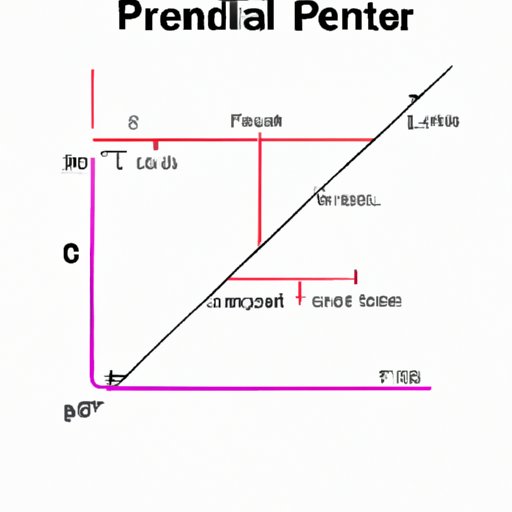
Introduction
Geometry is a fascinating subject because it helps us understand the world around us. From architecture to art, geometry is used in various fields. One of the fundamental concepts in geometry is perimeter, which is the distance around the edge of a two-dimensional shape. In this article, we will focus on rectangles and teach you all you need to know about calculating their perimeter.
The Complete Guide to Calculating the Perimeter of a Rectangle
Before we dive into the details of finding the perimeter of a rectangle, we must first define what perimeter is and its importance in geometry. Perimeter refers to the distance around the edge of a two-dimensional object. In geometry, perimeter is essential because it helps to determine the shape of an object and its area.
To find the perimeter of a rectangle, we use a simple formula. The perimeter of a rectangle is equal to the sum of all its sides. In other words, the perimeter of a rectangle can be found by adding the length and width of the rectangle and multiplying the sum by two. The formula for finding the perimeter of a rectangle is:
P = 2(l + w)
Where: P stands for perimeter, l stands for length, and w stands for width.
Mastering Basic Geometry: How to Find the Perimeter of a Rectangle
Now that we understand the definition of perimeter and how to use the formula to calculate it, let’s go over the different parts of a rectangle. A rectangle is a four-sided shape with opposite sides that are parallel and equal in length. The two short sides of a rectangle are its width, and the two long sides are its length. All four sides of a rectangle meet at right angles.
To find the perimeter of a rectangle, we must first measure its length and width. Once we have the measurements, we can plug them into the formula above to find the perimeter. Here’s a step-by-step guide to finding the perimeter of a rectangle:
- Measure the length and width of the rectangle using a ruler or measuring tape.
- Add the length and width of the rectangle.
- Multiply the sum by two to find the perimeter.
Step-by-Step Instructions for Finding the Perimeter of Rectangles
Let’s look at some examples to help you understand how to apply the formula:
Example 1:
If a rectangle has a length of 8 cm and a width of 5 cm, what is its perimeter?
Solution:
P = 2(l + w) = 2(8 + 5) = 2(13) = 26
Therefore, the perimeter of the rectangle is 26 cm.
Example 2:
If a rectangle has a length of 12 cm and a width of 18 cm, what is its perimeter?
Solution:
P = 2(l + w) = 2(12 + 18) = 2(30) = 60
Therefore, the perimeter of the rectangle is 60 cm.
A Quick and Easy Method for Calculating the Perimeter of a Rectangle
Another way to find the perimeter of a rectangle is by using a quick and easy method. This method is particularly useful when you don’t have access to a calculator or when you need to find the approximate perimeter of a rectangle quickly.
The quick and easy method involves the following steps:
- Multiply the length and width of the rectangle by 2.
- Add the products from step 1 together.
Let’s try this method with the first example from earlier:
Example 1 (using quick and easy method):
If a rectangle has a length of 8 cm and a width of 5 cm, what is its perimeter?
Solution:
2(8) + 2(5) = 16 + 10 = 26
Therefore, the perimeter of the rectangle is 26 cm.
Understanding the Logic of Perimeter: How to Find the Perimeter of a Rectangle
Now that we understand how to find the perimeter of a rectangle using the formula and the quick and easy method let’s discuss the logic behind it. The perimeter of a rectangle is the distance around its four sides. Therefore, to find the perimeter, we must add the length and width of the rectangle. It’s that simple!
But what about irregular rectangles? Irregular rectangles may have sides of different lengths, which means we can’t simply double the length and width and add them together. To find the perimeter of an irregular rectangle, we must add all of its sides. For example, if an irregular rectangle has sides that measure 2 cm, 5 cm, 3 cm, and 6 cm, we must add them together to find the perimeter:
P = 2 + 5 + 3 + 6 = 16
Therefore, the perimeter of the irregular rectangle is 16 cm.
Conclusion
Calculating the perimeter of a rectangle is easy when you understand the formula and the logic behind it. By mastering this basic geometry concept, you will have a better understanding of shapes and their properties. Knowing how to find the perimeter of a rectangle is useful in many everyday situations, such as when measuring the width of a room or calculating the amount of fencing needed to surround a garden. We hope this guide has helped you understand how to find the perimeter of a rectangle and encouraged you to apply this skill in your daily life.





